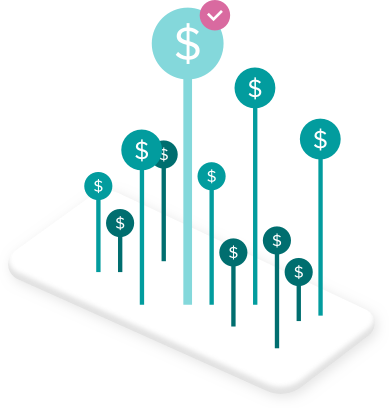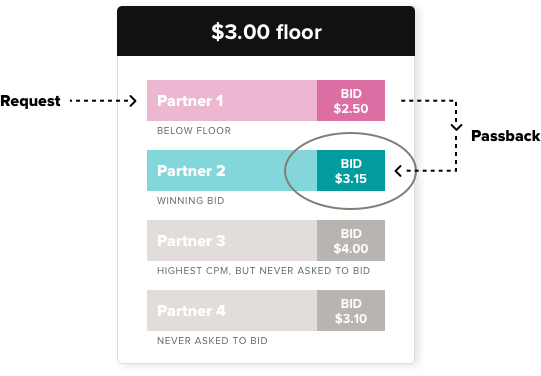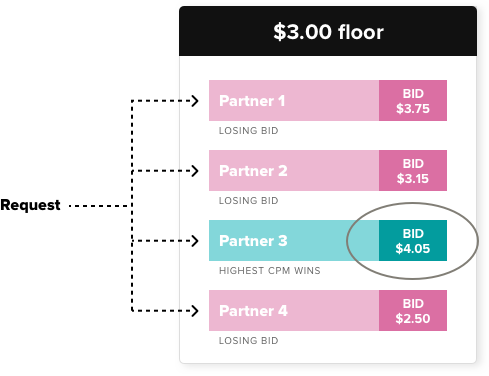Unified Auctions Explained
How Nimbus Gets You The Highest CPMs Possible
Unified auction is a programmatic technique that allows multiple demand sources to compete simultaneously for the same ad slot. Unified auction is also known as “header bidding” or “parallel bidding”.
In a unified auction, each demand partner has the ability to bid at the same time, instead of in sequence. Because all parties are bidding at once, this approach significantly drives up competition and maximizes your CPMs and revenue. Other sequenced solutions, also known as “waterfall auctions,” give certain demand partners (or their own marketplaces) a “first look” at your impressions before they decide to buy it. This means that you won’t always receive the highest possible price. With Nimbus, the highest bid wins, no matter the source.
A “unified auction” is an auction in which each demand partner has the ability to bid simultaneously, instead of in sequence. Because all networks are bidding at once, the unified auction approach significantly drives up competition and maximizes your CPMs and revenue.

Waterfall Auctions vs. Unified Auctions
A waterfall solution requires the publisher to offer their inventory to one ad network at a time – starting from the highest performing to the lowest – until the impression is finally sold. This setup gives priority to the networks at the top of the waterfall, allowing them to see the minimum floor that has been set, and cherry-pick which impressions they’d like to purchase, even if another demand partner was willing to pay a higher price. If they pass, the option goes to the next partner in line. This is called a “passback.” Passbacks can cause latency, as each network requires a separate ad call. Latency lowers fill rate and decreases your overall revenue.

In a unified auction, the ad exchange submits one request to all demand participants at the same time. The highest bidder wins the impression. Now there is competition, as all demand sources have one shot to bid against each other. All partners participate and offer their highest bid for each request. This is the bleeding edge of yield optimization. As a publisher, you know that you’re receiving the best price on every auction. Unified auctions only require one ad call, lowering latency, increasing your fill rates, and making you more money.

How To Make The Switch to Unified Auctions
On Nimbus, all the hard work is done for you with our server-to-server connection. Nimbus integrates every demand partner through a single SDK that handles both requesting and rendering. Making the switch is as seamless as integrating a single ad network. Once integrated, your demand partners are automatically synced to Nimbus to communicate to your inventory.
You can still work with your current demand partners, without the tedious task of optimizing your waterfall for priority. Nimbus unified auctions adhere to industry-standard oRTB (open real-time bidding) specifications. No more creating multiple placements and line items for each individual demand source. Nimbus calls all respective information dynamically in one request that all networks understand.
Learn more about how to integrate Nimbus into your mobile app.
